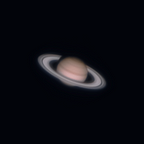An introduction into my private observatory.
No longer are meter-class observatory telescopes necessary in order to capture the fine details of planets, galaxies, and nebulae. With the advancement of consumer technology, amateur astronomers are able to capture outstanding detail right from the comfort of their gardens.
You really don’t need much of a telescope to observe the rings of Saturn, the moons of Jupiter, the jagged edges of the Lunar craters. Off-the-shelf telescopes can offer pleasant views through an eyepiece. If you want to take longer exposures with a camera, you will need to mount the telescope on a rotating shaft that spins at the same rate the stars traverse across the sky. The Earth spins quicker than you think! You can visibly see stars move across your field of view.
When the more demanding user requires sharper stars, longer exposures to capture fainter detail, more precise tools are necessitated. Wider apertures for higher resolution and more light collecting abilities, beefier mounts with finer gears to support the added weight, assisted cameras to track stars real-time to send corrections to the mount’s motors — keeping the stars sharper for longer.
By lapping gears with polishing compound, painting the internal components as black as possible to reduce stray light, to strengthen components as much as possible to reduce differential flexure, customizing your toolkit — this is what it takes to achieve great images.
With all of the street lights painting the air, it can blow out your imaging sensor’s pixels quickly with a foggy background, resulting in low contrast, low signal-to-noise data that isn’t idea. Fortunately the mass production of specialized coated glass filters allows the imager to essentially filter out all light except very specific colours. Hydrogen gas, for example, is a pinkish hue when ionized by luminous stars. A very specific wavelength of this emission at 656 nm, a narrow spike in it’s spectrum. A narrow band. By isolating this wavelength of light and blocking out all others, high contrast images are possible even in the most heavily light polluted urban environments.
Bright objects such as planets, the moon, nebulae cores, etc. can be captured with short exposures. By combining my raw images in software, its possible to stack only the signal, and “throw away” the noise — resulting in a clean high signal-to-noise ratio image with sharp, high contrast details.
I’m happy to share my passion with the public by selling my images in the forms of NFTs in limited runs. Own a piece of my adventure as this advanced species of monkey collects photons from distant origins. Let’s explore space together! NFT funds will go towards more advanced equipment.
Thank you for showing interest in my passion.
